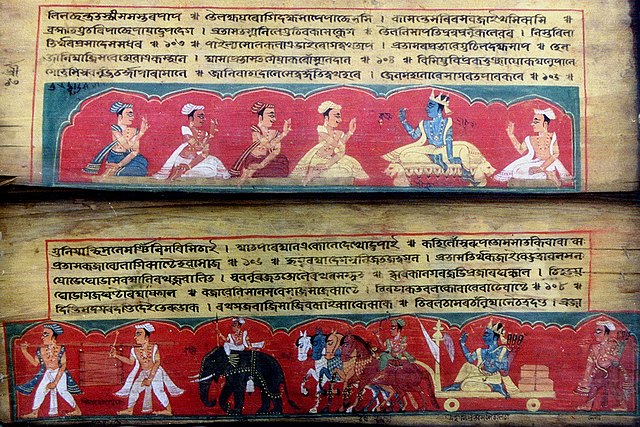Early Assamese
Form of Assamese spoken from 1300 to 1600 From Wikipedia, the free encyclopedia
Early Assamese or Proto-Eastern Kamarupa[1] is an ancestor of the modern Assamese language. It is found in the literature from the 14th century to the end of 16th century[2][3] in Kamata kingdom and rest the Brahmaputra valley of Assam.
| Early Assamese | |
|---|---|
| Region | Assam |
| Era | 14th-16th centuries |
Indo-European
| |
Early form | |
| Dialects | |
| Eastern Nagari | |
| Language codes | |
| ISO 639-3 | – |
| Glottolog | None |

Literature
Early Assamese literature period can be split into: a) The Pre-Vaishnavite period and b) The Vaishnavite sub periods.[4] The Pre-Vaishnavite period covers the period before the advent of Sankardeva and the Vaishnavite period initiated by his literary activities. The earliest Assamese writer, viz. Hema Saraswati and Harivara Vipra who composed Prahlada Charitra and Babruvahana parva respectively wrote under the patronage of King Durlabhanarayana of Kamatapura who ruled towards the end of the 13th or the earlier part of the 14th century. The next two important poets of the same period are Rudra Kandali and Kaviratna Saraswati who composed Drona parva and Jayadratha vadha. But the towering poet of this period is Madhava Kandali who is respectfully referred to by Sankardeva (b. 1449) as his predecessor. Madhava Kandali flourished towards the end of the 14th century and translated the entire Ramayana under the patronage of Mahamanikya, the then Varāha king of Central Assam.[5]
Writing system

Early Assamese was written in the Eastern Nagari script.
Morphology and Grammar
Pronouns
| Person[6][7] | Singular nominative | Singular oblique | Plural nominative | Plural oblique |
|---|---|---|---|---|
| 1st | mai, maĩ, āmi | mo-, moho- | āmi, āmarā | āmā-, āmhā-, āmāsā- |
| 2nd informal | tai, taĩ | to-, toho- | torā | torā- |
| 2nd familiar | tumi | tomā-, tomhā | tomarā | tomāsā- |
| 3rd inf., prox., m. | i, ito | ihā-, ā- | ārā | ārā-, esambā- |
| 3rd inf. dist. f. | ei | ei- | ārā | ārā-, esambā- |
| 3rd hon., prox. | ehe, eho | ehante, ehanto | esambā- | |
| 3rd inf., dist., m. | si, sito | tā-, tāhā- | tārā | tārā-, tāsambā- |
| 3rd inf. dist. f. | tāi | tāi- | ||
| 3rd hon. dist. | tehõ, tehẽ, tehã | tehante, tehento, tesambe | tāsambā- |
Notes
References
Wikiwand - on
Seamless Wikipedia browsing. On steroids.
